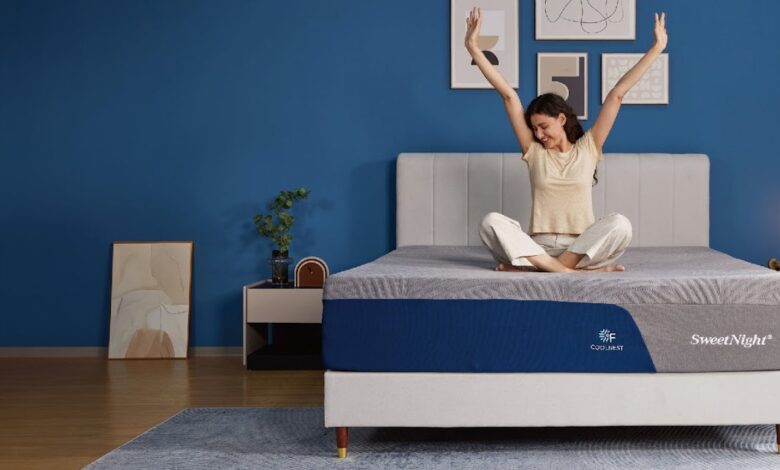Top Mattress Brands for a Comfortable Bedroom

A quality mattress serves as the foundation for restorative sleep, directly impacting your physical health, mental clarity, and overall quality of life. The right mattress supports proper spinal alignment, reduces pressure points, and creates an environment where your body can fully relax and recover from daily stresses. Without adequate comfort and support during sleep, you may experience chronic pain, fatigue, and decreased productivity throughout your day.
Homeowners often struggle with the overwhelming variety of mattress options available today, from traditional innerspring designs to modern memory foam and hybrid constructions. The challenge extends beyond simply choosing a type—factors like firmness levels, materials, durability, temperature regulation, and budget constraints all complicate the decision-making process. Many people also face difficulty determining which features genuinely matter for their specific sleep needs versus marketing hype.
Creating a comfortable bedroom starts with understanding your unique sleep preferences, body type, and any specific concerns such as back pain or partner disturbance. This guide focuses on helping you navigate the mattress selection process by examining firmness levels, identifying solutions for different sleeping positions, comparing leading brands, and providing practical strategies to make a confident, informed choice that transforms your bedroom into a true sanctuary for rest.
Understanding Mattress Firmness
Mattress firmness represents how hard or soft a mattress feels when you lie down, typically measured on a scale from 1 to 10, where 1 indicates extremely soft and 10 represents exceptionally firm. Most mattresses fall between 3 and 8 on this spectrum, with medium-firm options (around 5-7) being the most popular choice among consumers. Soft mattresses (3-4) provide a plush, cradling sensation that allows your body to sink deeply into the surface. Medium mattresses (5-6) offer balanced comfort with moderate contouring, while firm mattresses (7-8) deliver minimal give and keep your body positioned closer to the surface. Understanding these distinctions helps you identify which firmness range aligns with your comfort preferences and physical requirements.
Your preferred sleeping position significantly influences the ideal firmness level for your body. Side sleepers typically benefit from softer to medium mattresses that cushion the shoulders and hips, preventing pressure buildup in these prominent areas while maintaining spinal alignment. Back sleepers generally find medium to medium-firm mattresses most supportive, as these options provide enough contouring to support the lower back’s natural curve without allowing the midsection to sink excessively. Stomach sleepers usually require firmer mattresses to prevent their hips from dropping too deeply, which can create an uncomfortable arch in the lower back and lead to morning stiffness.
Memory foam mattresses excel at adapting to different firmness preferences through their unique pressure-relieving properties. This material responds to body heat and weight, conforming closely to your body’s contours regardless of the firmness level you choose. A soft memory foam mattress creates a deep hug-like sensation, while a firm memory foam option provides responsive support with less sinkage. The versatility of memory foam construction allows manufacturers to engineer specific firmness levels by adjusting foam density and layer configurations, making it an excellent choice for sleepers who need precise support tailored to their body type and sleeping habits.
Best Mattresses for Side Sleepers
Side sleeping places concentrated pressure on specific areas of your body, particularly the shoulders and hips, which bear most of your weight throughout the night. Without proper support, these pressure points can restrict blood circulation, causing numbness, tingling, and the need to constantly shift positions. A mattress designed for side sleepers must provide adequate cushioning to accommodate these curves while maintaining spinal alignment from your neck through your tailbone. When your spine remains neutral, your muscles can fully relax rather than working throughout the night to compensate for poor positioning, resulting in deeper, more restorative sleep and reduced morning stiffness.
Memory foam mattresses consistently rank as the top choice for side sleepers due to their exceptional pressure relief and body-conforming properties. The material’s responsive nature allows it to cradle your shoulders and hips while supporting your waist, creating a balanced sleep surface that distributes weight evenly. Hybrid mattresses combining memory foam comfort layers with innerspring support cores offer another excellent option, providing the contouring benefits of foam with enhanced breathability and edge support. Latex mattresses also work well for side sleepers who prefer a more responsive feel with natural materials, as latex offers gentle cushioning without the deep sinkage some people find uncomfortable in pure memory foam designs.
The ideal firmness range for side sleepers typically falls between 3 and 6 on the firmness scale, with most people finding their sweet spot around medium-soft to medium. A mattress that’s too firm won’t allow your shoulders and hips to sink adequately, creating painful pressure buildup that forces you to wake and reposition frequently. Conversely, an overly soft mattress may let your body sink too deeply, causing your spine to curve unnaturally and leading to lower back discomfort. Your body weight also influences the optimal firmness—lighter individuals under 130 pounds generally need softer options for sufficient contouring, while those over 230 pounds benefit from firmer surfaces that prevent excessive sinkage and maintain proper support throughout the night.
Comparing Top Mattress Brands
The mattress industry features several established brands that have earned reputations for quality, innovation, and customer satisfaction. Tempur-Pedic stands as a pioneer in memory foam technology, offering mattresses that conform precisely to body contours while providing exceptional motion isolation. Their proprietary TEMPUR material responds to temperature and weight, creating a personalized sleep surface that has made them a premium choice for over three decades. Sealy, one of the oldest mattress manufacturers, combines traditional innerspring expertise with modern materials, delivering reliable support through their Posturepedic technology that reinforces the center third of the mattress where most body weight concentrates. Serta has built its reputation on balanced comfort and support, with their Perfect Sleeper line specifically engineered to address common sleep problems like tossing and turning, while their iComfort series brings gel-infused memory foam for enhanced temperature regulation.
Purple has disrupted the traditional mattress market with its unique hyper-elastic polymer grid that flexes under pressure points while remaining firm where support is needed. This innovative material provides a distinctive feel that neither sinks like memory foam nor pushes back like latex, appealing to sleepers who find conventional mattresses too extreme in either direction. The grid structure also promotes exceptional airflow, making Purple mattresses particularly attractive for hot sleepers. Casper revolutionized mattress shopping by pioneering the bed-in-a-box concept, combining multiple foam layers to create a balanced feel suitable for various sleeping positions. Their zoned support system provides targeted reinforcement where bodies need it most, while their open-cell foam construction addresses heat retention concerns common in all-foam designs. Saatva takes a different approach by offering luxury innerspring and hybrid mattresses delivered directly to consumers, featuring dual coil systems that provide both deep-down support and responsive comfort without the compressed packaging of foam competitors. SweetNight has also entered the direct-to-consumer market with hybrid and memory foam options that focus on affordability without sacrificing quality, offering multiple firmness levels and cooling gel infusions to accommodate various sleep preferences.
Customer reviews reveal distinct patterns in brand performance across different priorities. Tempur-Pedic consistently receives high marks for pressure relief and durability, with many owners reporting their mattresses maintain support for ten years or more, though some reviewers note the dense foam retains heat and creates a stuck-in feeling that doesn’t suit active sleepers. Sealy earns praise for traditional comfort and edge support, with customers appreciating the familiar innerspring feel enhanced by modern foam layers, though some report sagging issues after several years, particularly in lower-priced models. Serta users frequently highlight the brand’s success in balancing support with plush comfort, making their mattresses approachable for couples with different preferences, while occasional complaints focus on off-gassing odors and inconsistent firmness across different retailers.
Purple garners enthusiastic reviews from people who struggled with other mattress types, particularly those dealing with pressure point pain or temperature issues, as the grid technology delivers on its promises of cooling and pressure relief. However, the unique feel doesn’t resonate with everyone, and some customers find the mattress too firm or experience a learning curve adjusting to the unconventional surface. Casper receives consistently positive feedback for its universal comfort approach, with most reviewers confirming the mattress works reasonably well across different sleeping positions, though some heavier individuals report insufficient support and lighter sleepers occasionally find it too firm. Saatva stands out in reviews for its luxury feel at accessible pricing, with customers praising the responsive innerspring support and white-glove delivery service, while the main criticisms center on the mattress’s weight making it difficult to move and occasional issues with coil noise developing over time. These review patterns help potential buyers identify which brand’s strengths align with their specific needs and which common complaints might present deal-breakers for their situation.
See also: Why Choose a Smartwatch for Your Active Lifestyle?
Tips for Choosing the Right Mattress
Begin your mattress selection process by honestly assessing your sleeping position habits, as this single factor influences nearly every other decision you’ll make. Track your sleep for several nights, noting the position you fall asleep in and the position you wake up in most frequently. Side sleepers should prioritize softer to medium options that cushion pressure points, back sleepers need medium to medium-firm surfaces that support spinal curves, and stomach sleepers require firmer mattresses that prevent hip sinkage. If you change positions throughout the night, a medium-firm mattress typically accommodates multiple sleeping styles without compromising support in any single position. Consider your body weight alongside sleeping position—add one firmness level if you weigh over 230 pounds to prevent excessive sinkage, or subtract one level if you weigh under 130 pounds to ensure adequate contouring.
Evaluate your specific pain points and physical concerns before narrowing your options. Chronic lower back pain sufferers often find relief with medium-firm memory foam or hybrid mattresses that maintain lumbar support while cushioning the hips and shoulders. Those experiencing hip or shoulder pain should focus on pressure-relieving materials like memory foam or latex in softer firmness ranges that allow these areas to sink slightly while supporting the waist. If you wake with neck stiffness, your mattress might be creating misalignment—pair your new mattress selection with an appropriate pillow height that keeps your head level with your spine. Hot sleepers should investigate cooling technologies like gel infusions, phase-change materials, or breathable constructions such as innerspring or hybrid designs with enhanced airflow. People with allergies benefit from hypoallergenic materials like latex or tightly woven covers that resist dust mites, while those sensitive to chemicals should seek CertiPUR-US certified foams or natural latex options with minimal off-gassing.
Test mattresses properly by spending at least 15 minutes on each option in your typical sleeping position when shopping in stores. Wear comfortable clothing and remove bulky items from your pockets so you can genuinely feel how the mattress responds to your body. Lie in your primary sleeping position for the first five minutes, then switch to your secondary position if applicable, paying attention to how your spine feels and whether you notice pressure building anywhere. Bring your sleeping partner if you share a bed, testing the mattress simultaneously to assess motion transfer and ensure adequate space. Push on the edges to evaluate perimeter support if you tend to sleep near the mattress border or sit on the edge when getting dressed. When shopping online, carefully review the trial period terms—most reputable brands offer 90 to 120 nights for home testing, but confirm whether returns are truly free or involve restocking fees and return shipping costs that could negate your refund.
Set a realistic budget that balances quality with affordability, recognizing that mattresses represent long-term investments in your health rather than disposable purchases. Quality mattresses typically range from $800 to $2000 for a queen size, with budget options starting around $500 and luxury models exceeding $3000. Avoid the temptation to purchase the cheapest option available, as low-quality materials deteriorate quickly, forcing you to replace the mattress within a few years and ultimately costing more than investing in a durable product initially. However, premium pricing doesn’t always correlate with superior performance—many mid-range brands deliver excellent quality without luxury markups. Consider the cost per night of use over the mattress’s expected lifespan, which typically ranges from seven to ten years for quality products. A $1200 mattress used for eight years costs approximately 41 cents per night, making it a reasonable investment compared to the consequences of poor sleep on your health, productivity, and medical expenses.
Research warranty coverage and understand what protection you’re actually receiving before finalizing your purchase. Most mattresses include warranties ranging from 10 to 25 years, but these guarantees cover manufacturing defects rather than normal wear or comfort preferences. Read the fine print to identify what constitutes a valid warranty claim—most manufacturers only honor warranties for sagging exceeding 1 to 1.5 inches, measured with the mattress on a proper foundation. Warranties typically become prorated after an initial non-prorated period, meaning you’ll pay an increasing percentage of replacement costs as the mattress ages. Maintain your warranty validity by using an appropriate foundation or bed frame, as most warranties require proper support and become void if the mattress sits on an incompatible surface. Keep your purchase receipt and any required documentation, and photograph your mattress periodically to document its condition if you suspect developing issues.
Consider practical factors beyond comfort that affect your long-term satisfaction with your mattress choice. Measure your bedroom doorways, stairwells, and hallways before ordering to ensure delivery personnel can maneuver a traditional mattress into your space, or opt for a compressed bed-in-a-box if access is limited. Evaluate your current bed frame and foundation to confirm compatibility with your new mattress—memory foam and latex mattresses require solid support or closely-spaced slats no more than three inches apart, while innerspring mattresses work with traditional box springs. Factor in the weight of different mattress types if you anticipate moving frequently or need to rotate the mattress regularly, as innerspring and hybrid models can weigh 100 pounds or more while foam mattresses typically weigh 50 to 80 pounds. Think about your future needs if your circumstances might change—couples planning to have children might prioritize motion isolation and durability, while individuals expecting to move should consider whether a mattress ships compressed for easier transport.
Protect your investment immediately by purchasing a quality mattress protector that guards against spills, stains, and moisture while remaining breathable enough not to trap heat. This simple addition extends your mattress’s lifespan significantly and maintains warranty coverage, as most manufacturers void warranties for stains or moisture damage. Establish a rotation schedule if your mattress design permits it, turning the mattress 180 degrees every three to six months to distribute wear evenly across the surface. Use a proper foundation that provides adequate support without voiding your warranty—platform beds with solid surfaces or closely-spaced slats work well for foam mattresses, while box springs or foundations designed specifically for innerspring mattresses suit traditional constructions. Keep your mattress clean by vacuuming it monthly to remove dust and allergens, and immediately address any spills by blotting with a clean cloth and allowing the area to air dry completely before replacing bedding. Following these maintenance practices ensures your carefully chosen mattress delivers consistent comfort and support throughout its intended lifespan, maximizing your return on this essential bedroom investment.
Making Your Final Mattress Selection
Selecting the right mattress transforms your bedroom into a restorative sanctuary where quality sleep becomes the foundation for improved health, productivity, and daily well-being. Throughout this guide, we’ve explored how mattress firmness directly impacts comfort based on your sleeping position, why side sleepers particularly benefit from pressure-relieving materials like memory foam, and how leading brand mattresses such as Tempur-Pedic, Sealy, Purple, Casper, and Saatva each offer distinct advantages for different sleep needs. The comparison of these top manufacturers reveals that no single brand suits everyone—your ideal choice depends on your specific requirements for support, temperature regulation, motion isolation, and budget constraints.
Making an informed mattress decision requires honest assessment of your sleeping habits, physical concerns, and practical considerations like trial periods and warranty coverage. By testing mattresses properly, setting realistic budgets, and protecting your investment with appropriate care, you ensure years of comfortable, supportive sleep. Remember that this purchase represents a long-term investment in your health rather than a simple furniture acquisition. Take the time to research thoroughly, test options whenever possible, and choose a mattress that addresses your unique needs. With the knowledge you’ve gained here, you’re now equipped to confidently select a mattress that will help you wake refreshed and ready to embrace each day with renewed energy and vitality.




